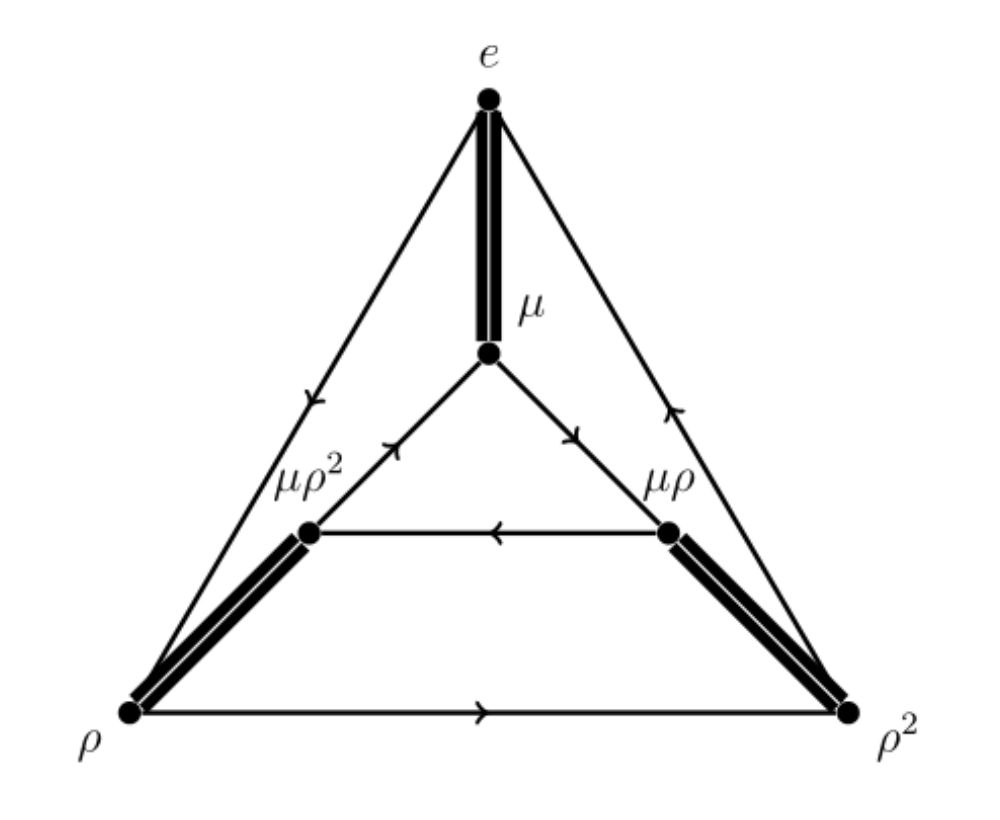
Module Description
Groups are essential to abstract algebra. Indeed many algebraic structures (including rings, fields, modules of rings and vector spaces) are groups with extra operations. Groups are not only key to understand other areas of mathematics such as geometry and representation theory, they have also influenced our understanding of other sciences including physics, chemistry, material science or cryptography.
Module Aims
The idea of a group can be perhaps best explained in a simple example: the symmetries of a triangle. The equilateral triangle have 6 symmetries: three rotations (120, 240 and 360 degrees) and three reflections (each of them along the line passing by a vertex and the middle of the opposite edge). Because these six symmetries form a group, the composition of any two of them give another symmetry in the group. Furthermore, each symmetry can be reverted by another symmetry. In group theory the real numbers and the symmetries of the equilateral triangle can be treated uniformly through axioms and theorems that derive from these axioms. Ultimately, some of the theorems of this module will allow us to classify groups under certain assumptions. More generally, the aims of the course are:
- To introduce students to basic definitions of group theory.
- To develop students’ critical understanding of some main results in group theory.
- To develop understanding of how to apply such results in particular problems.
Module Learning Outcomes
On completion of the course, students should:
- Have a systemic understanding of key definitions in the theory of groups and critical awareness of how they interact and support each other.
- Select and apply relevant theorems to examples.
- Construct arguments to prove properties of groups.
- Solve problems involving homomorphisms between pairs of groups.
- Formulate counterexamples to statements.
- Understand the concept of a group presentation.
- Recognise and work with cyclic, dihedral, symmetric and alternating groups.
- Deploy methods learned to distinguish pairs of groups defined by presentations or to prove they are isomorphic.
- Apply geometric techniques to obtain and illustrate algebraic properties of particular groups.
- Understand some operations to construct groups from other groups, including direct product, semidirect product, abelianisation and derived subgroups.
Syllabus
- Homomorphisms, isomorphisms, kernel and image, automorphisms.
- Cosets, normal subgroups and quotient groups. First isomorphism theorem. Conjugacy classes and centraliser of a group.
- Symmetry group and cycle structure. Alternating group. Cayley's theorem. Dihedral groups.
- Direct and semi-direct products. Classification of finite abelian groups.
- Free groups, group presentations (definition and examples).
- Group actions and orbit-stabiliser theorem.
- Abelianisation and derived subgroup.
- Cayley Diagrams
- Module Supervisor: Alastair Litterick